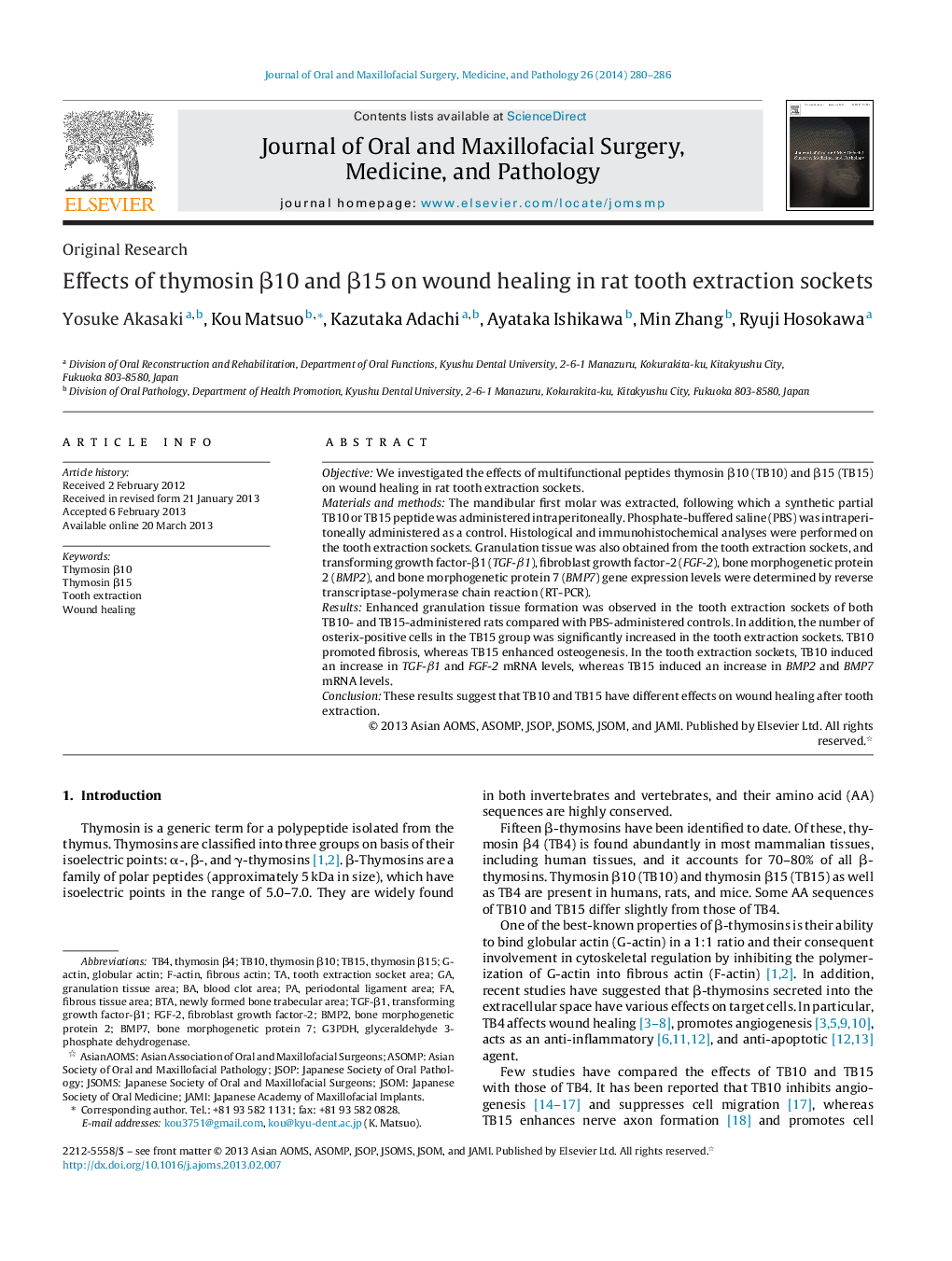| Article ID | Journal | Published Year | Pages | File Type |
|---|---|---|---|---|
| 3159997 | Journal of Oral and Maxillofacial Surgery, Medicine, and Pathology | 2014 | 7 Pages |
ObjectiveWe investigated the effects of multifunctional peptides thymosin β10 (TB10) and β15 (TB15) on wound healing in rat tooth extraction sockets.Materials and methodsThe mandibular first molar was extracted, following which a synthetic partial TB10 or TB15 peptide was administered intraperitoneally. Phosphate-buffered saline (PBS) was intraperitoneally administered as a control. Histological and immunohistochemical analyses were performed on the tooth extraction sockets. Granulation tissue was also obtained from the tooth extraction sockets, and transforming growth factor-β1 (TGF-β1), fibroblast growth factor-2 (FGF-2), bone morphogenetic protein 2 (BMP2), and bone morphogenetic protein 7 (BMP7) gene expression levels were determined by reverse transcriptase-polymerase chain reaction (RT-PCR).ResultsEnhanced granulation tissue formation was observed in the tooth extraction sockets of both TB10- and TB15-administered rats compared with PBS-administered controls. In addition, the number of osterix-positive cells in the TB15 group was significantly increased in the tooth extraction sockets. TB10 promoted fibrosis, whereas TB15 enhanced osteogenesis. In the tooth extraction sockets, TB10 induced an increase in TGF-β1 and FGF-2 mRNA levels, whereas TB15 induced an increase in BMP2 and BMP7 mRNA levels.ConclusionThese results suggest that TB10 and TB15 have different effects on wound healing after tooth extraction.
